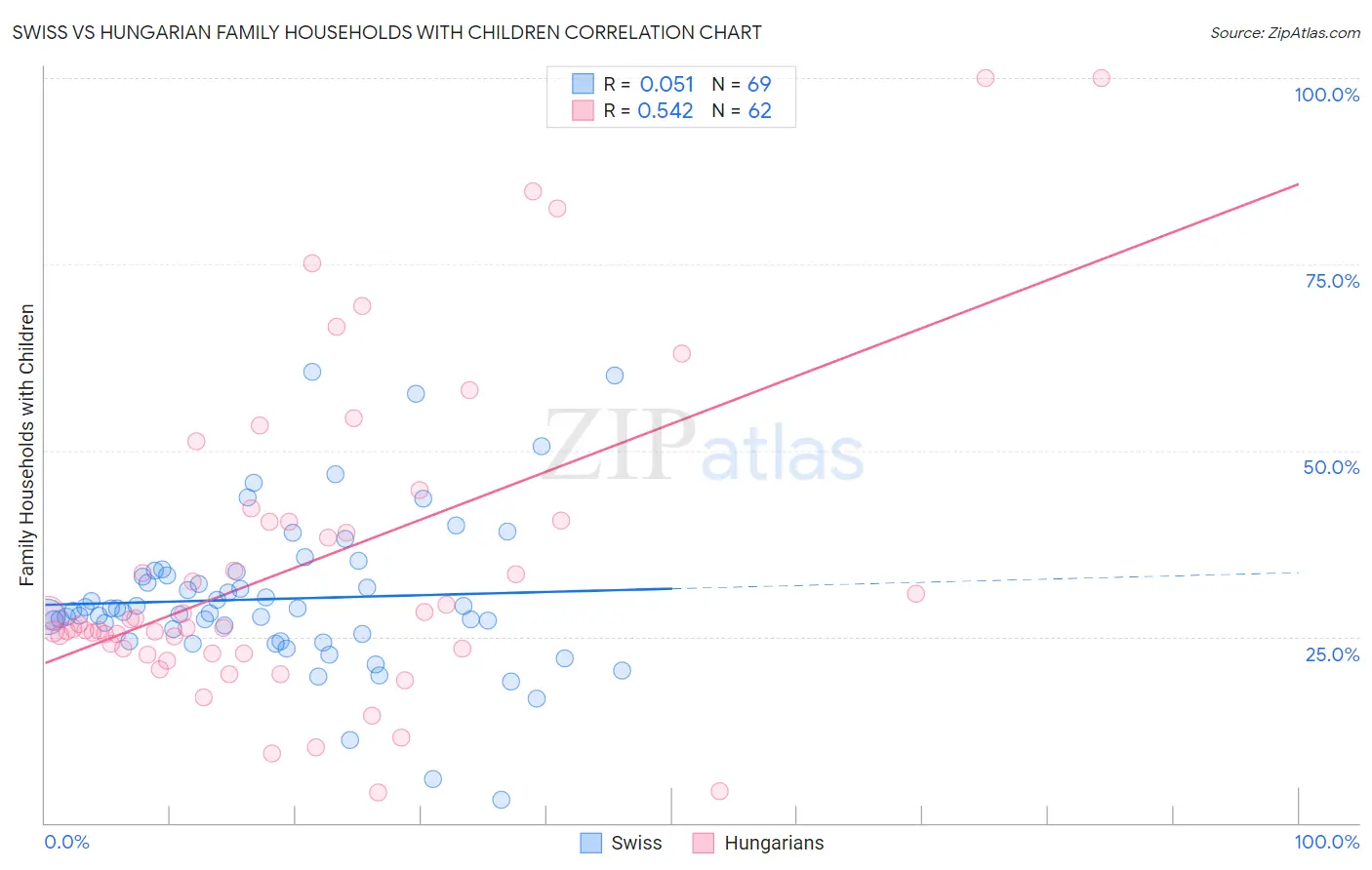Swiss vs Hungarian Family Households with Children
COMPARE
Swiss
Hungarian
Family Households with Children
Family Households with Children Comparison
Swiss
Hungarians
27.7%
FAMILY HOUSEHOLDS WITH CHILDREN
81.4/ 100
METRIC RATING
142nd/ 347
METRIC RANK
27.6%
FAMILY HOUSEHOLDS WITH CHILDREN
74.6/ 100
METRIC RATING
156th/ 347
METRIC RANK
Swiss vs Hungarian Family Households with Children Correlation Chart
The statistical analysis conducted on geographies consisting of 464,540,276 people shows a slight positive correlation between the proportion of Swiss and percentage of family households with children in the United States with a correlation coefficient (R) of 0.051 and weighted average of 27.7%. Similarly, the statistical analysis conducted on geographies consisting of 485,629,585 people shows a substantial positive correlation between the proportion of Hungarians and percentage of family households with children in the United States with a correlation coefficient (R) of 0.542 and weighted average of 27.6%, a difference of 0.22%.

Family Households with Children Correlation Summary
| Measurement | Swiss | Hungarian |
| Minimum | 3.1% | 4.2% |
| Maximum | 60.6% | 100.0% |
| Range | 57.5% | 95.8% |
| Mean | 30.1% | 34.7% |
| Median | 28.5% | 26.5% |
| Interquartile 25% (IQ1) | 24.9% | 23.3% |
| Interquartile 75% (IQ3) | 33.4% | 40.4% |
| Interquartile Range (IQR) | 8.6% | 17.1% |
| Standard Deviation (Sample) | 10.3% | 21.2% |
| Standard Deviation (Population) | 10.2% | 21.0% |
Demographics Similar to Swiss and Hungarians by Family Households with Children
In terms of family households with children, the demographic groups most similar to Swiss are Immigrants from Eastern Asia (27.7%, a difference of 0.010%), Spanish (27.7%, a difference of 0.020%), Vietnamese (27.7%, a difference of 0.040%), Immigrants from Eastern Africa (27.7%, a difference of 0.040%), and Brazilian (27.7%, a difference of 0.060%). Similarly, the demographic groups most similar to Hungarians are Comanche (27.6%, a difference of 0.010%), Icelander (27.6%, a difference of 0.020%), Immigrants from Cabo Verde (27.6%, a difference of 0.030%), Ethiopian (27.6%, a difference of 0.070%), and Indian (Asian) (27.6%, a difference of 0.080%).
| Demographics | Rating | Rank | Family Households with Children |
| Vietnamese | 82.6 /100 | #139 | Excellent 27.7% |
| Spanish | 81.8 /100 | #140 | Excellent 27.7% |
| Immigrants | Eastern Asia | 81.7 /100 | #141 | Excellent 27.7% |
| Swiss | 81.4 /100 | #142 | Excellent 27.7% |
| Immigrants | Eastern Africa | 80.2 /100 | #143 | Excellent 27.7% |
| Brazilians | 79.6 /100 | #144 | Good 27.7% |
| Immigrants | Chile | 79.5 /100 | #145 | Good 27.7% |
| Basques | 79.5 /100 | #146 | Good 27.7% |
| Immigrants | Moldova | 79.1 /100 | #147 | Good 27.6% |
| Osage | 79.0 /100 | #148 | Good 27.6% |
| Menominee | 78.9 /100 | #149 | Good 27.6% |
| Argentineans | 78.5 /100 | #150 | Good 27.6% |
| Portuguese | 77.8 /100 | #151 | Good 27.6% |
| Ethiopians | 77.0 /100 | #152 | Good 27.6% |
| Immigrants | Cabo Verde | 75.6 /100 | #153 | Good 27.6% |
| Icelanders | 75.3 /100 | #154 | Good 27.6% |
| Comanche | 74.8 /100 | #155 | Good 27.6% |
| Hungarians | 74.6 /100 | #156 | Good 27.6% |
| Indians (Asian) | 71.6 /100 | #157 | Good 27.6% |
| Romanians | 70.8 /100 | #158 | Good 27.6% |
| Mongolians | 70.7 /100 | #159 | Good 27.6% |